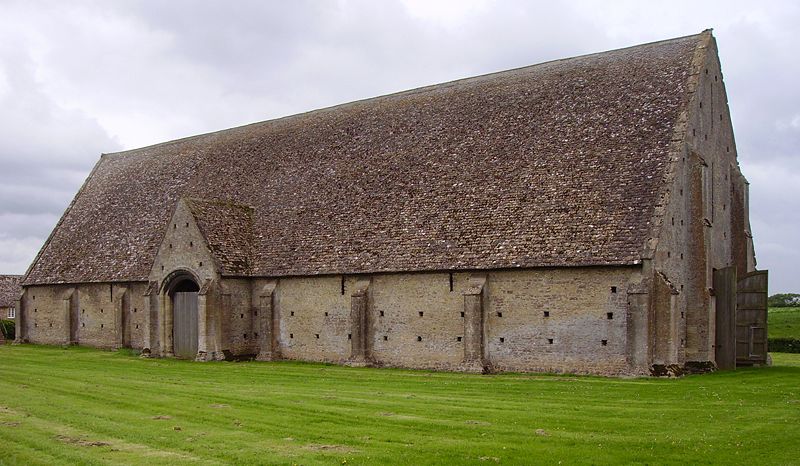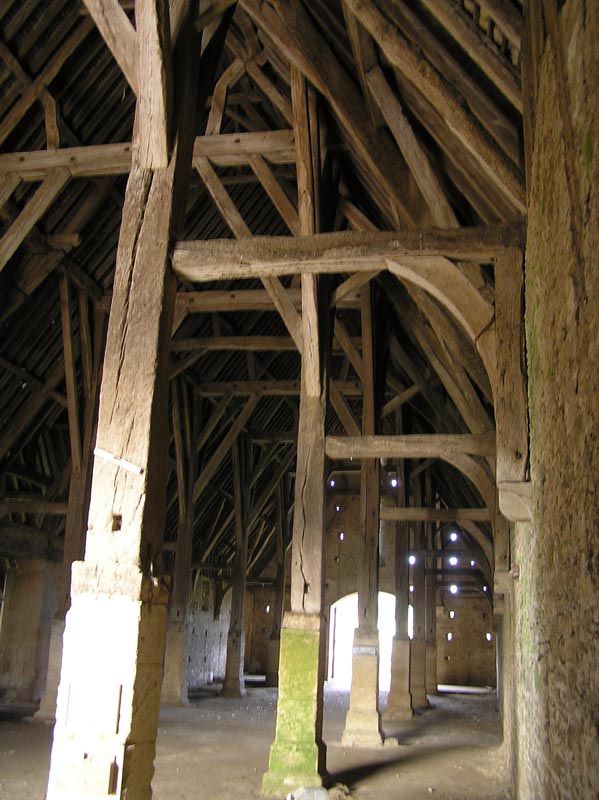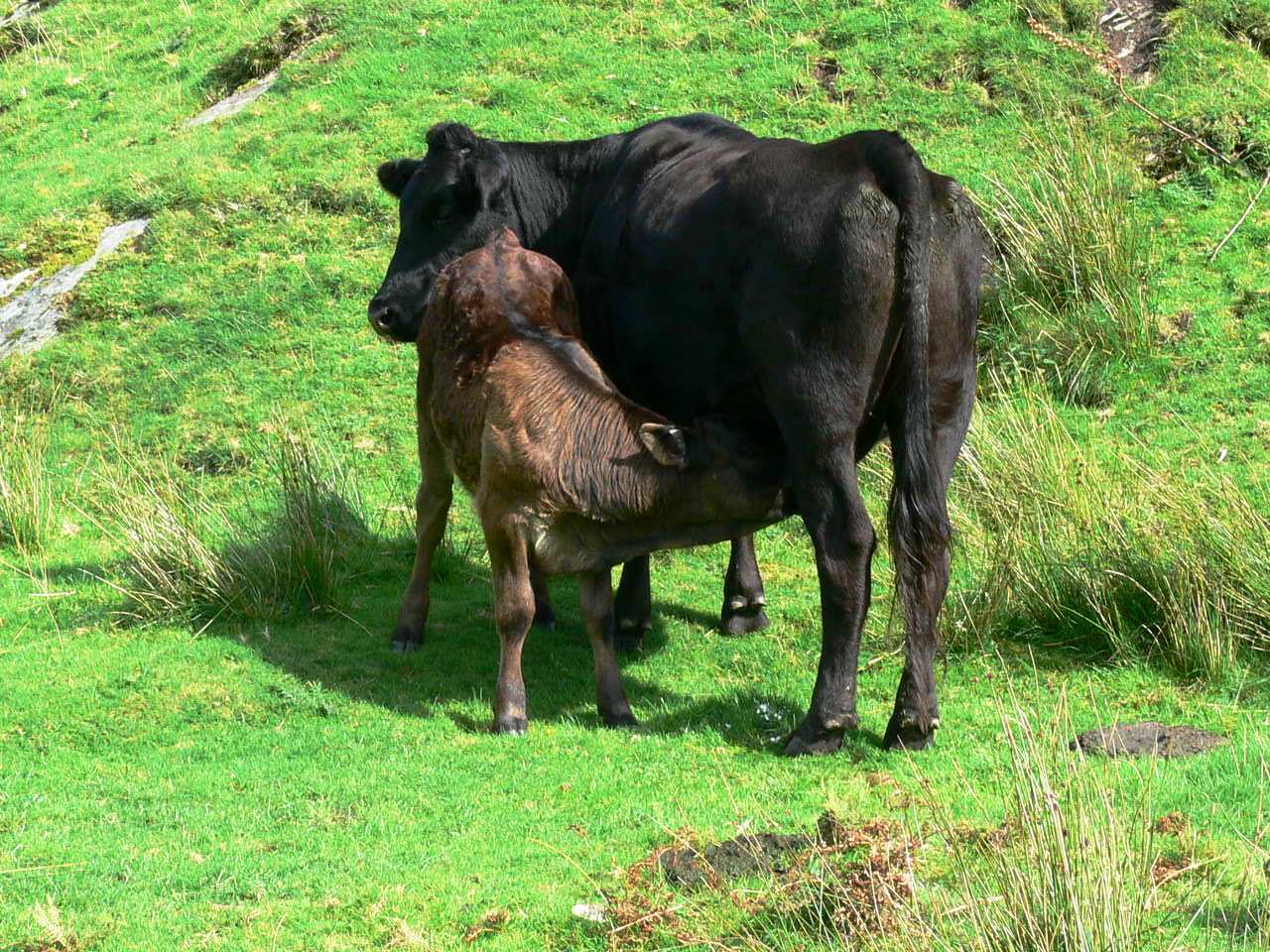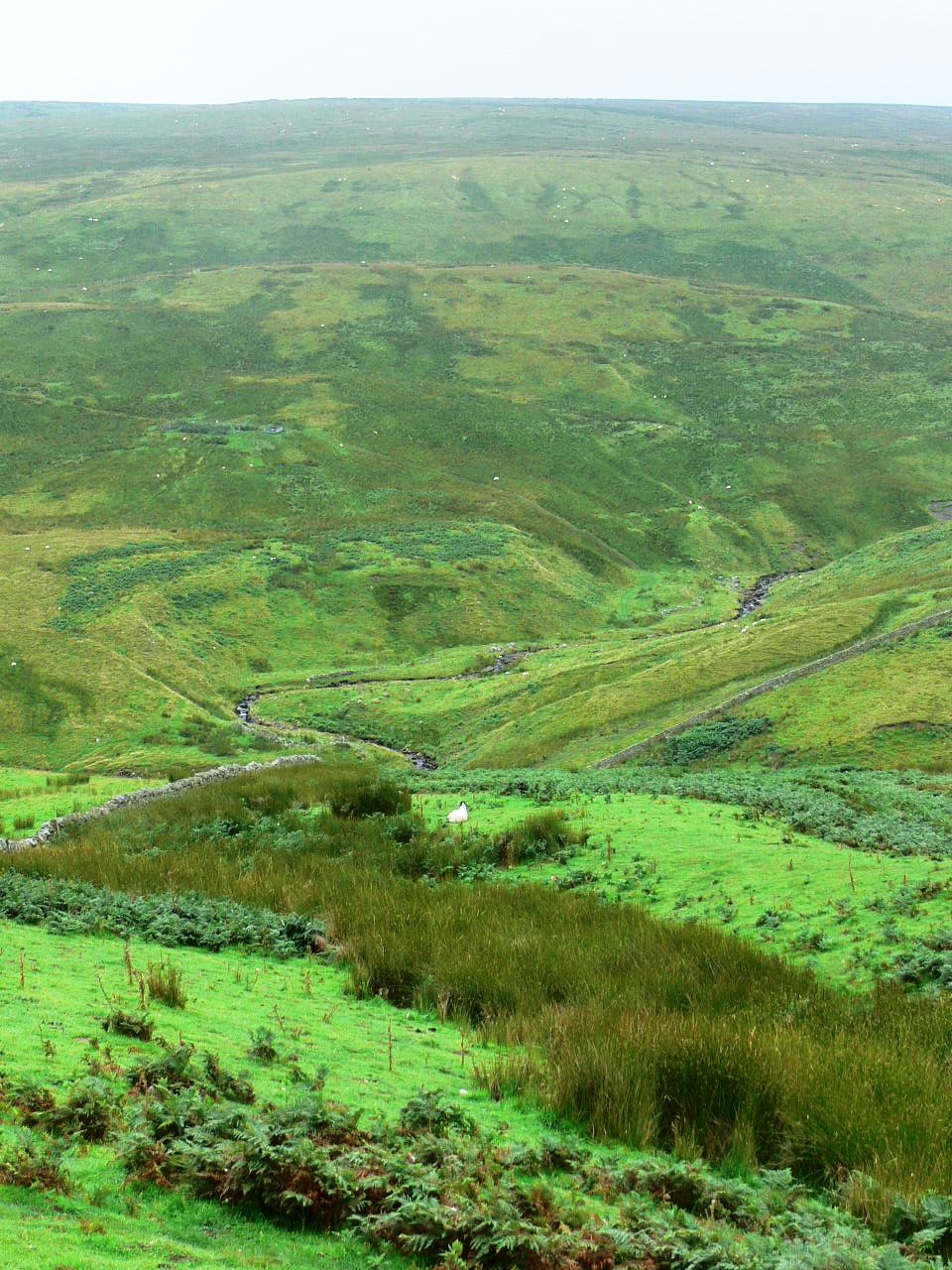 I am a keen walker and when I moved to the United States ago to take up my position as Artist-in-Residence at Thomas More College, I immediately started to investigate the local country walks. I lived Nashua, a town in New Hampshire, very close to its southern border with Massachussetts. Both are beautiful states and there are state and national parks with developed paths within striking distance of here. These are very different from the British country walks that I am used to however. The countryside in Britain is almost all farmland of some description. So whereas in the US, as a general principle, the state and national parks aim to present man with a ‘wilderness’, that is countryside unaffected by man, the British national parks preserve a traditionally farmed landscape.
I am a keen walker and when I moved to the United States ago to take up my position as Artist-in-Residence at Thomas More College, I immediately started to investigate the local country walks. I lived Nashua, a town in New Hampshire, very close to its southern border with Massachussetts. Both are beautiful states and there are state and national parks with developed paths within striking distance of here. These are very different from the British country walks that I am used to however. The countryside in Britain is almost all farmland of some description. So whereas in the US, as a general principle, the state and national parks aim to present man with a ‘wilderness’, that is countryside unaffected by man, the British national parks preserve a traditionally farmed landscape. Creating a network of walks across privately owned farms is possible in Britain because in this respect the attitude to private ownership of land is different in England to that in the US. In England there are public rights of way across private land which the landowner is obliged by law to maintain. In return, the public is expected to respect the land and the farmer’s crops and animals and stick to the path. There are many thousands of miles of public footpath across private land. This is a system which would be impossible to police effectively, yet it works. On the whole the farmers happily keep the paths open and maintain them for the benefit of walkers, and the whole the public respects the farmers’ land, crops and animals. So although backed up by law, it is founded mainly on mutual trust and respect. It is working example of the good that arises when individuals go beyond a strict interpretation of the law and create a covenantal approach for the benefit of the common good.
Creating a network of walks across privately owned farms is possible in Britain because in this respect the attitude to private ownership of land is different in England to that in the US. In England there are public rights of way across private land which the landowner is obliged by law to maintain. In return, the public is expected to respect the land and the farmer’s crops and animals and stick to the path. There are many thousands of miles of public footpath across private land. This is a system which would be impossible to police effectively, yet it works. On the whole the farmers happily keep the paths open and maintain them for the benefit of walkers, and the whole the public respects the farmers’ land, crops and animals. So although backed up by law, it is founded mainly on mutual trust and respect. It is working example of the good that arises when individuals go beyond a strict interpretation of the law and create a covenantal approach for the benefit of the common good.
 As a result, everyone in Britain has the chance to see firsthand how man can cultivate and work the land for benefit of all of us. This goes further than simple recreation. For those who wish to accept it, there is profound lesson to be learnt. Creating the possibility for all people to come into direct contact with land that has been worked by man beautifully will teach us that man is capable of working productively with the land in harmony with it. This counters the false idea that man’s activity is necessarily destructive and ‘unnatural’. This latter point is one of the fundamental premises of neo-paganism. It is an anti-human principle, which leads ultimately to the culture of death.
As a result, everyone in Britain has the chance to see firsthand how man can cultivate and work the land for benefit of all of us. This goes further than simple recreation. For those who wish to accept it, there is profound lesson to be learnt. Creating the possibility for all people to come into direct contact with land that has been worked by man beautifully will teach us that man is capable of working productively with the land in harmony with it. This counters the false idea that man’s activity is necessarily destructive and ‘unnatural’. This latter point is one of the fundamental premises of neo-paganism. It is an anti-human principle, which leads ultimately to the culture of death.
 Some Americans might react sharply and suspect that this an example of the state overreaching itself. However, the idea of the right of the public to cross private land goes back to medieval times. It could not be enforced by the state anyway, because as explained earlier, it relies not so much on the law, but on mutual respect for its effectiveness. The way it worked was this. The landowner, perhaps the lord of the manor, agreed to allow men to farm a strip of his land to grow food in exchange for a tithe, a taxation of a tenth of the produce. The tithes were collected in huge barns – ‘tithebarns’- the photographs, above and below show one example that still exists in Oxfordshire in England. However, there was a problem. Our serf might have the land to grow his food, but if it is situated in the middle of a large estate owned by someone else, how is he going to get to it without trespassing? To overcome this, a system of pathways developed that ensured that people could get to their land without fear of prosecution. They were allowed ‘right of way’. They could cross someone else’s land provided they followed the path and respected the property. This is part of an old tradition of noblesse oblige. This is a French phrase which means literally, ‘nobility obliges’. It communicates the idea that with privilege comes the responsibility to use it well in service of the common good.
Some Americans might react sharply and suspect that this an example of the state overreaching itself. However, the idea of the right of the public to cross private land goes back to medieval times. It could not be enforced by the state anyway, because as explained earlier, it relies not so much on the law, but on mutual respect for its effectiveness. The way it worked was this. The landowner, perhaps the lord of the manor, agreed to allow men to farm a strip of his land to grow food in exchange for a tithe, a taxation of a tenth of the produce. The tithes were collected in huge barns – ‘tithebarns’- the photographs, above and below show one example that still exists in Oxfordshire in England. However, there was a problem. Our serf might have the land to grow his food, but if it is situated in the middle of a large estate owned by someone else, how is he going to get to it without trespassing? To overcome this, a system of pathways developed that ensured that people could get to their land without fear of prosecution. They were allowed ‘right of way’. They could cross someone else’s land provided they followed the path and respected the property. This is part of an old tradition of noblesse oblige. This is a French phrase which means literally, ‘nobility obliges’. It communicates the idea that with privilege comes the responsibility to use it well in service of the common good.
 The idea of a public right of way survived, surprisingly, the industrial revolution right through to the 20th century. By the 20th century, however, many landowners were doing the best to close the paths down and stop public access. The demand for access to the land arose now not from the need to cultivate a leased strip of land, but for the desire for recreation by city dwellers, who otherwise had no chance to experience the countryside. This natural desire to be in contact with the land was being thwarted. There were mass peaceful protest walks. This resulted in Britain’s national parks being set up in which not just the paths, but the traditional beauty of the farmed landscape was protected, as well as the maintenance of traditional public footpaths throughout the whole countryside (not just within the park boundaries).
The idea of a public right of way survived, surprisingly, the industrial revolution right through to the 20th century. By the 20th century, however, many landowners were doing the best to close the paths down and stop public access. The demand for access to the land arose now not from the need to cultivate a leased strip of land, but for the desire for recreation by city dwellers, who otherwise had no chance to experience the countryside. This natural desire to be in contact with the land was being thwarted. There were mass peaceful protest walks. This resulted in Britain’s national parks being set up in which not just the paths, but the traditional beauty of the farmed landscape was protected, as well as the maintenance of traditional public footpaths throughout the whole countryside (not just within the park boundaries).
As you can imagine, I would love to see a similar system set up in the US but was told that Americans' understanding of what private ownership of land means, as well as fear of litigation is less likely to allow this. To my surprise, however, I have found out that in New Hampshire at least allows there is the possibility of such a system. By New Hampshire law, the citizens have access to any land provided they respect what is on it. The same law protects landowners from litigation if the person who goes on to his land is injured in some way. The landowner can bar people from his land if he wishes however, by ‘posting’ it – putting up a publicly displayed notice which tells people that they are trespassing and if they encroach and they will be prosecuted. Landowners exercise this option by paying a higher rate of property tax to the state.
the possibility of such a system. By New Hampshire law, the citizens have access to any land provided they respect what is on it. The same law protects landowners from litigation if the person who goes on to his land is injured in some way. The landowner can bar people from his land if he wishes however, by ‘posting’ it – putting up a publicly displayed notice which tells people that they are trespassing and if they encroach and they will be prosecuted. Landowners exercise this option by paying a higher rate of property tax to the state.
Also, I have recently seen some similar attempts working within American law in California, around the San Francisco Bay area, to create walks across pasture land rather than always 'wilderness'.
 According to Catholic social teaching, land is a common good. It is created by God and all people therefore should have access to it. This would seem to mitigate against the idea of private ownership of land. However, in practice this is not the case. The best way to have a plot of land developed for the common good is to give favoured person the freedom to develop it and to exclude others only so far as they do not interfere with this. This is not a right to private property as many envisage it today, however. It is better seen as a privilege, an entitlement to develop it in accordance with the common good (and farming it for profit would qualify in this respect). In medieval times there was also ‘common’ ground, preserved for commoners who did not own the land, so that there was always somewhere for them to put their animals to pasture. Sadly, much common pasture land was seized for private ownership after the industrial revolution. There are exceptions however and Port Meadow in Oxford is one. You can walk across it today and see a charming hotchpotch of ponies, horses and cows grazing on this huge flat open expanse of grassland next to the Thames that reaches right into the city. Here in the US Boston Common exists right in the centre of the city today, admittedly as a public park and clearly it gets its name from the tradition of common pasture land. I do not know of its current status in law in regard to free pasture however. If any inner city goatherds can enlighten me in this respect, I would be grateful.
According to Catholic social teaching, land is a common good. It is created by God and all people therefore should have access to it. This would seem to mitigate against the idea of private ownership of land. However, in practice this is not the case. The best way to have a plot of land developed for the common good is to give favoured person the freedom to develop it and to exclude others only so far as they do not interfere with this. This is not a right to private property as many envisage it today, however. It is better seen as a privilege, an entitlement to develop it in accordance with the common good (and farming it for profit would qualify in this respect). In medieval times there was also ‘common’ ground, preserved for commoners who did not own the land, so that there was always somewhere for them to put their animals to pasture. Sadly, much common pasture land was seized for private ownership after the industrial revolution. There are exceptions however and Port Meadow in Oxford is one. You can walk across it today and see a charming hotchpotch of ponies, horses and cows grazing on this huge flat open expanse of grassland next to the Thames that reaches right into the city. Here in the US Boston Common exists right in the centre of the city today, admittedly as a public park and clearly it gets its name from the tradition of common pasture land. I do not know of its current status in law in regard to free pasture however. If any inner city goatherds can enlighten me in this respect, I would be grateful.
 What is attractive about the medieval balance between practicalities and the preservation of land for the common good is that it allows for a blurring of the division between the two extremes of complete public access one hand and on the other a total exclusion of all those who d0 not own land.
What is attractive about the medieval balance between practicalities and the preservation of land for the common good is that it allows for a blurring of the division between the two extremes of complete public access one hand and on the other a total exclusion of all those who d0 not own land.
It may be an unrealizable dream, but nevertheless I will end by encourage all landowners to consider the idea of noblesse oblige in regard to their land. At the same time I would like to encourage citizens, if accorded this privilege, to respect the land they go on to. I am aware that the Americans' love of hunting with guns might during deer season might need thinking about if this is going to work - perhaps this might have to restrained as a condition of access in some cases - but if we can find a way of making it happen, I believe that we will have an even happier nation if we do!



